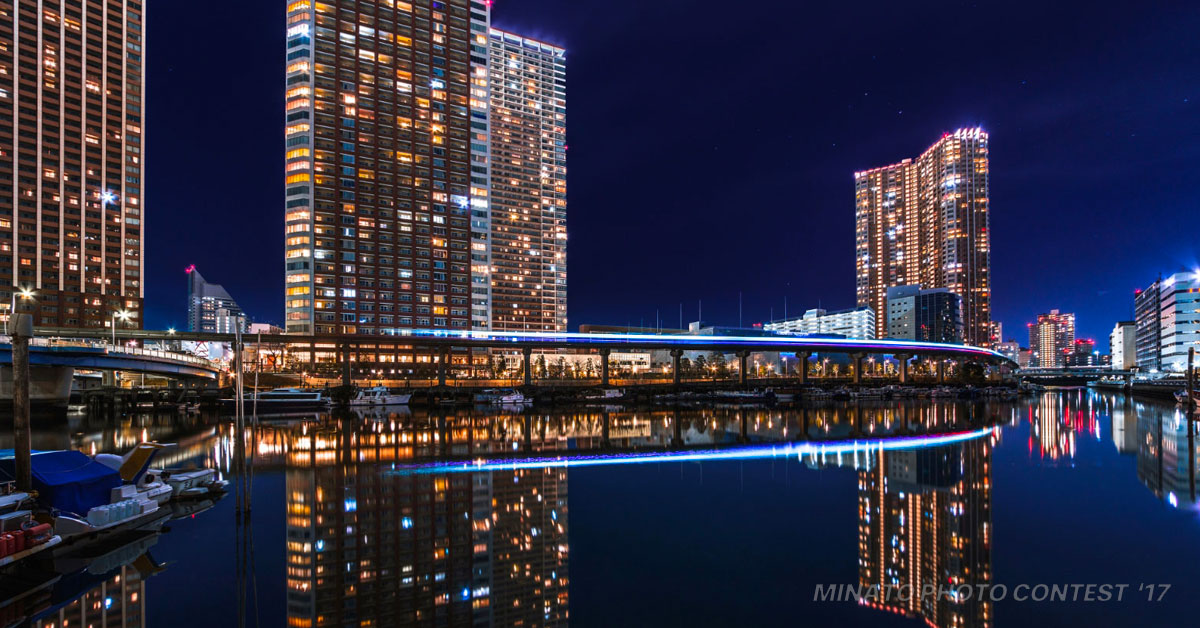A meeting of trendy and historic! Minato-ku as a cosmopolitan city
In the present day, Minato-ku is a place where trends are invented; a center of commerce and business marked by rows of skyscrapers. This landscape, which seems completely normal now, looks completely different if we travel back in time 100 years.
The place where Minato stands today has twice been turned to rubble, receiving catastrophic damage from the Great Kanto Earthquake and the Second World War. However, following the war, many former Japanese Army facilities were handed over to the US armed forces, and many US troops were stationed in Minato, where there were a lot of military establishments. There were also the embassies of various countries since pre-war days, and Minato soon became a new western-style business district.
In addition, as Japan faced postwar reconstruction, re-entry into global society, and hosting the Tokyo Olympics, there was a need for international institutions, and ultramodern buildings were constructed one after another in Minato. With the changing times, the trends of each generation become history, and the next trend is born. Minato is an intersection connecting the trends of the past and present.
The place where Minato stands today has twice been turned to rubble, receiving catastrophic damage from the Great Kanto Earthquake and the Second World War. However, following the war, many former Japanese Army facilities were handed over to the US armed forces, and many US troops were stationed in Minato, where there were a lot of military establishments. There were also the embassies of various countries since pre-war days, and Minato soon became a new western-style business district.
In addition, as Japan faced postwar reconstruction, re-entry into global society, and hosting the Tokyo Olympics, there was a need for international institutions, and ultramodern buildings were constructed one after another in Minato. With the changing times, the trends of each generation become history, and the next trend is born. Minato is an intersection connecting the trends of the past and present.
Akasaka Palace State Guest House- Japan's first western-style palace
Akasaka Palace State Guest House welcomes guests of honor from countries all over the world. Public access used to be restricted, but as of 2016, it is open to the general public throughout the year.
The State Guest House was built in 1909 as an Imperial Palace for the Crown Prince (the future Emperor Taisho) in preparation for his wedding, on the remains of a Kishu Domain estate. It was a product of the combined efforts of contemporary Japanese architecture, fine arts, and industrial arts.
Postwar, it was used as a government office building, before being opened as the State Guest House in 1974. In 2009, the original structures such as the main building, main entrance, and fountain were designated as national treasures, as they exemplify the peak of modern western-style architecture in Meiji times. Many people visit every day to experience the beautiful architecture of Japan's only Neo-Baroque western-style palace.
Postwar, it was used as a government office building, before being opened as the State Guest House in 1974. In 2009, the original structures such as the main building, main entrance, and fountain were designated as national treasures, as they exemplify the peak of modern western-style architecture in Meiji times. Many people visit every day to experience the beautiful architecture of Japan's only Neo-Baroque western-style palace.
Takanawa Fire Department Nihonenoki Branch - A retro fire station that is still active today
Completed in 1933, the Takanawa Fire Department Nihonenoki Branch is still in active service, watching over the town of Takanawa. This retro building looks almost like a lighthouse, its curved lines and surfaces based on the motifs of German Expressionism. As a piece of modern heritage architecture, it was chosen as a Selected Historical Building of the Tokyo Metropolitan Government in March, 2010.
The lower part of the first floor wall shows granite masonry; the eaves and window ledges, an exposed aggregate finish; the entryway is also granite with a wooden door. The third-floor auditorium exhibits firefighting tools from the Edo and Meiji periods. Visits are accepted with advance reservation, allowing you to simultaneously examine a fire department and this historic structure.
*Visits may not be possible in the event of an emergency.
The lower part of the first floor wall shows granite masonry; the eaves and window ledges, an exposed aggregate finish; the entryway is also granite with a wooden door. The third-floor auditorium exhibits firefighting tools from the Edo and Meiji periods. Visits are accepted with advance reservation, allowing you to simultaneously examine a fire department and this historic structure.
*Visits may not be possible in the event of an emergency.
Tokyo Tower- A symbol of postwar recovery
Tokyo Tower was completed in 1958. At the time, its 333 meter height made it the world's tallest self-supporting tower. Even today, it is a popular sightseeing spot and symbol of Tokyo, but at the time it was built, it was a symbol of postwar recovery.
At that time, today's surrounding tall buildings did not yet exist, so you could see Tokyo Tower from almost anywhere in the area. The unmistakable world's tallest tower must have been the pride and joy of its day, with a total building cost of approximately three billion yen (around 30 billion yen today), and 200,000 laborers involved in its construction.
By the way, Tokyo Tower's characteristic coloring is determined by the Civil Aeronautics Act, and cannot be freely changed. In 1986, with an amendment the act, the tower's original 11 equal stripes of alternating white and international orange were repainted into 7 equal stripes, and a more reddish shade of international orange was used.
By the way, Tokyo Tower's characteristic coloring is determined by the Civil Aeronautics Act, and cannot be freely changed. In 1986, with an amendment the act, the tower's original 11 equal stripes of alternating white and international orange were repainted into 7 equal stripes, and a more reddish shade of international orange was used.
Rainbow Bridge - The suspension bridge of the future, built from a carefully considered design
Rainbow Bridge, opened in 1993, is a major transport link and part of the urban expressway network, connecting the coastal urban subcenter established on Tokyo's waterfront to the heart of the city.
As well as convenience for transport, Rainbow Bridge had the role of being appropriate scenery for the newly created waterfront urban subcenter area, and apparently a great deal of discussion went into its design. Taking into consideration harmony with its urban coastal setting—the straight lines of the skyscrapers and the port's ocean horizon—the bridge was designed to give an elegant impression, with soft, curving lines. This suspension bridge also has a walkway, so you can enjoy a promenade over the bridge.
National Art Center, Tokyo - A new point of art dissemination, from a gallery with a beautiful facade surrounded by forest
Japan's fifth national art gallery, opened in 2007. This is a new type of gallery which has no permanent collection. The building, with its characteristic beautifully undulating glass curtain wall, was designed by Kisho Kurokawa.
The concept was "an art gallery in the middle of a forest", and it was created as a dynamic and open space, in harmony with its verdant surroundings.
The concept was "an art gallery in the middle of a forest", and it was created as a dynamic and open space, in harmony with its verdant surroundings.
Inside is a futuristic expanse, drenched in gentle natural light from the curtain wall, with two inverse cones towering inside the spacious lobby.
In the cosmopolitan city of Minato, where a variety of information accumulates, this gallery has become a new point of art dissemination, functioning as an art center with the roles of cultivating Japanese art culture and spreading international art news.
In the cosmopolitan city of Minato, where a variety of information accumulates, this gallery has become a new point of art dissemination, functioning as an art center with the roles of cultivating Japanese art culture and spreading international art news.
Time travel through architectural structures
Minato-ku Time travel Tour
Many new spots that are ahead of the times are created in Minato-ku - a place where businesses and trends start. This is not a recent thing - Minato-ku has been home to trendy spots throughout history, and many of these places still exist. Minato-ku Time Travel Tour takes a look around those historical trendy spots in Minato-ku based on four different themes. Pick your favorite theme and take a journey back in time!








